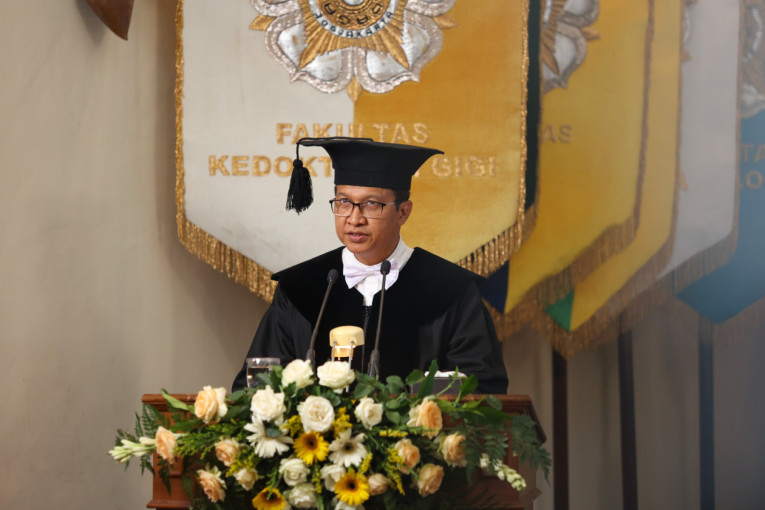
Gingivitis, the inflammation of gums, is a prevalent oral cavity ailment, trailing only dental caries in frequency but boasting a relatively high prevalence.
This affliction, which impacts the supporting tissues of teeth, known as periodontal tissues, arises as a host response to bacterial toxins.
The colonization of bacteria in the gingival margin and interdental papillae triggers a shift in bacterial composition from gram-positive to gram-negative and from aerobic to anaerobic strains.
Gingivitis is the body’s defense mechanism within the oral cavity, responding to infections and toxins from oral bacteria. The progression into damage occurs when the body’s defense mechanisms falter in neutralizing these threats.
As the affliction advances, it encompasses other supporting structures of teeth, including cementum, periodontal ligaments, and alveolar bone, culminating in tooth looseness and potential detachment from its socket.
“The evolution of gingivitis into periodontitis is recognized as marginal periodontitis. Dental caries and gingivitis are multifaceted oral diseases linked to specific microbiota’s heightened accumulation and dominance,” expressed Professor Suryono on Thursday (Jan. 4) during his inauguration as a professor of periodontology at the UGM Faculty of Dentistry.
“The dysbiosis condition, disrupting the equilibrium of the oral microbiome, leads to environmental damage to hard dental tissues, marked by the onset of caries, and to soft tissues, marked by the onset of gingivitis.”
In his address titled “Prevention of Periodontal Disease Through Oral Microbiome Balance Care and Tooth Surface Environment Manipulation,” Professor Suryono, who serves as the Dean of the Faculty of Dentistry as well, emphasized that dental caries result from acid-producing microbiota metabolism, leading to mineral dissolution from hard dental tissues.
Gingivitis emerges due to toxins produced by microbiota in quantities surpassing the oral cavity’s defense system, representing the body’s defense response.
The multifactorial interplay, including time, bacteria, substrate, and the host represented by hard dental tissues, has become a widely accepted model for caries onset.
Likewise, the model for gingivitis onset is the failure to maintain equilibrium in the interaction between bacterial virulence, manifested through toxins, and the oral cavity’s defense system, particularly in teeth-supporting tissues.
Microbiota, shared between the two occurrences, acts as a common factor leading to these diseases.
“Thus, controlling bacteria’s role becomes paramount in preventive endeavors,” he remarked.
Professor Suryono stressed that harmonizing oral microbiome symbiosis, involving the interaction between oral microbiota and the host, encompassing hard dental tissues, oral mucosa, saliva, and gingiva with various physical, biochemical, and genetic characteristics, is a prevention and treatment concept worthy of exploration.
It is an alternative, forward-thinking approach rooted in the fundamental principle of maintaining and reinstating the normal balance of the oral ecosystem.
By fostering the harmonious interaction of oral microbiota in a normal way and fortifying the resilience of the oral environment, environmental engineering of the oral cavity can be achieved through diverse methods to prevent harmful dysbiosis.
Preserving conditions in a normal state is deemed more critical than precipitating destruction that results in imbalances in the oral microbiome.
“Preventing the onset of dental and oral diseases is better than treating them. Therefore, Indonesia’s aspirations for a nation free of dental and oral diseases (caries and gingivitis) by 2030 can be progressively realized,” he concluded.
Author: Agung Nugroho
Photographer: Donnie


